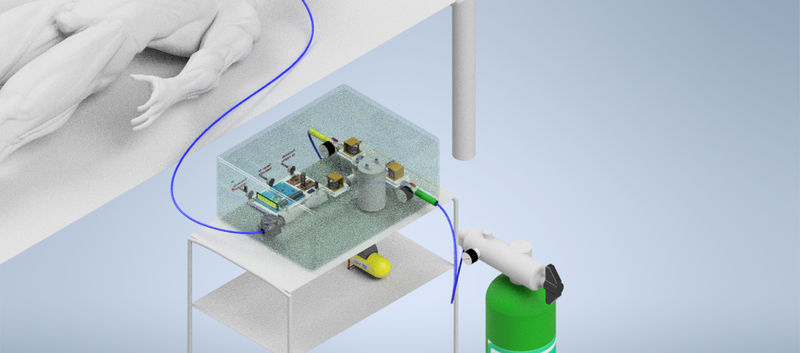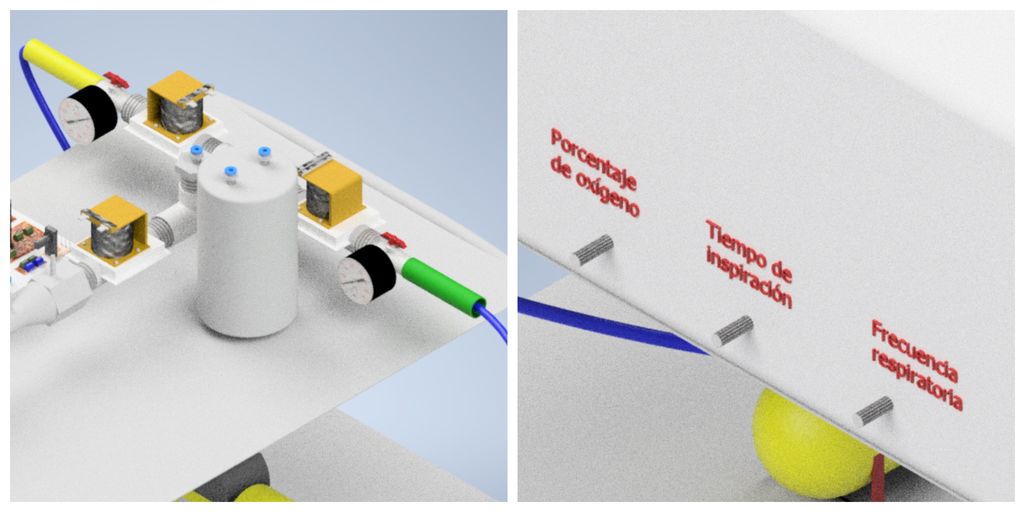The main objective with the development of this device is to be able to cover the possible lack of ventilators within the current contingency that the country is experiencing, and in this way, to develop a low-cost and fast manufacturing alternative to serve patients and be able to save as many lives as possible.
The result of an interdisciplinary collaboration is an invasive mechanical ventilator with a solenoid valve system controlled by a simple electronic circuit, capable of providing the respiratory support required by COVID-19 patients in respiratory failure to preserve life. Such a support is critical given the severe compromise of the respiratory functions seen in the COVID-19 patients. The device allows ventilation to be controlled by volume, administer PEEP (Positive End Expiratory Pressure), regulate the respiratory frequency, O2 concentration, inspiratory-to-expiratory time ratio, uses conventional air filters to protect patients from particles and microorganisms (including viruses); it includes graphics to monitor airway pressure and volume, as well as alarms and security systems, to detect values outside the safety range for humans.
How was this device designed?
It’s safe and reliable:
Allows monitoring of the supplied air pressures and volumes.
Has security and alarm systems for seven variables, to warn about dangerous pressure ranges.
Includes air filters to protect patients from particles and microorganisms, including viruses.
It’s easy to use and efficient:
Designed with national lowcost and easy-to-access supplies, available in the national market.
It can be fed with oxygen cylinders or by plugging into hospital medical gas pipeline systems.
Works with electric power and has a backup battery in case of power cuts.
It’s opensource technology (nonpatent protected), to be transferred to whomever needs it.


The main objective with the development of this device is to be able to cover the possible lack of ventilators within the current contingency that the country is experiencing, and in this way, to develop a low-cost and fast manufacturing alternative to serve patients and be able to save as many lives as possible.
The result of an interdisciplinary collaboration is an invasive mechanical ventilator with a solenoid valve system controlled by a simple electronic circuit, capable of providing the respiratory support required by COVID-19 patients in respiratory failure to preserve life. Such a support is critical given the severe compromise of the respiratory functions seen in the COVID-19 patients. The device allows ventilation to be controlled by volume, administer PEEP (Positive End Expiratory Pressure), regulate the respiratory frequency, O2 concentration, inspiratory-to-expiratory time ratio, uses conventional air filters to protect patients from particles and microorganisms (including viruses); it includes graphics to monitor airway pressure and volume, as well as alarms and security systems, to detect values outside the safety range for humans.


